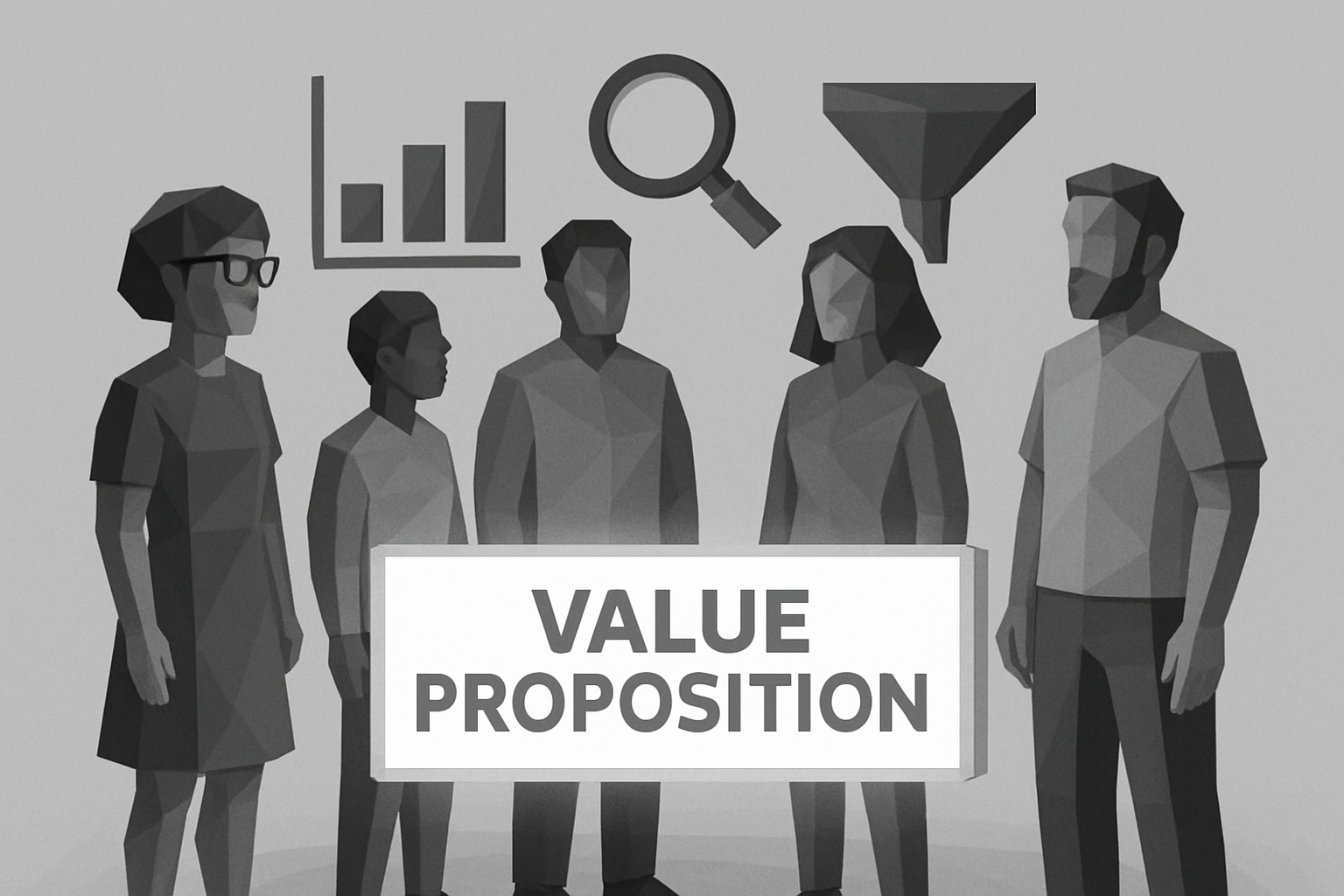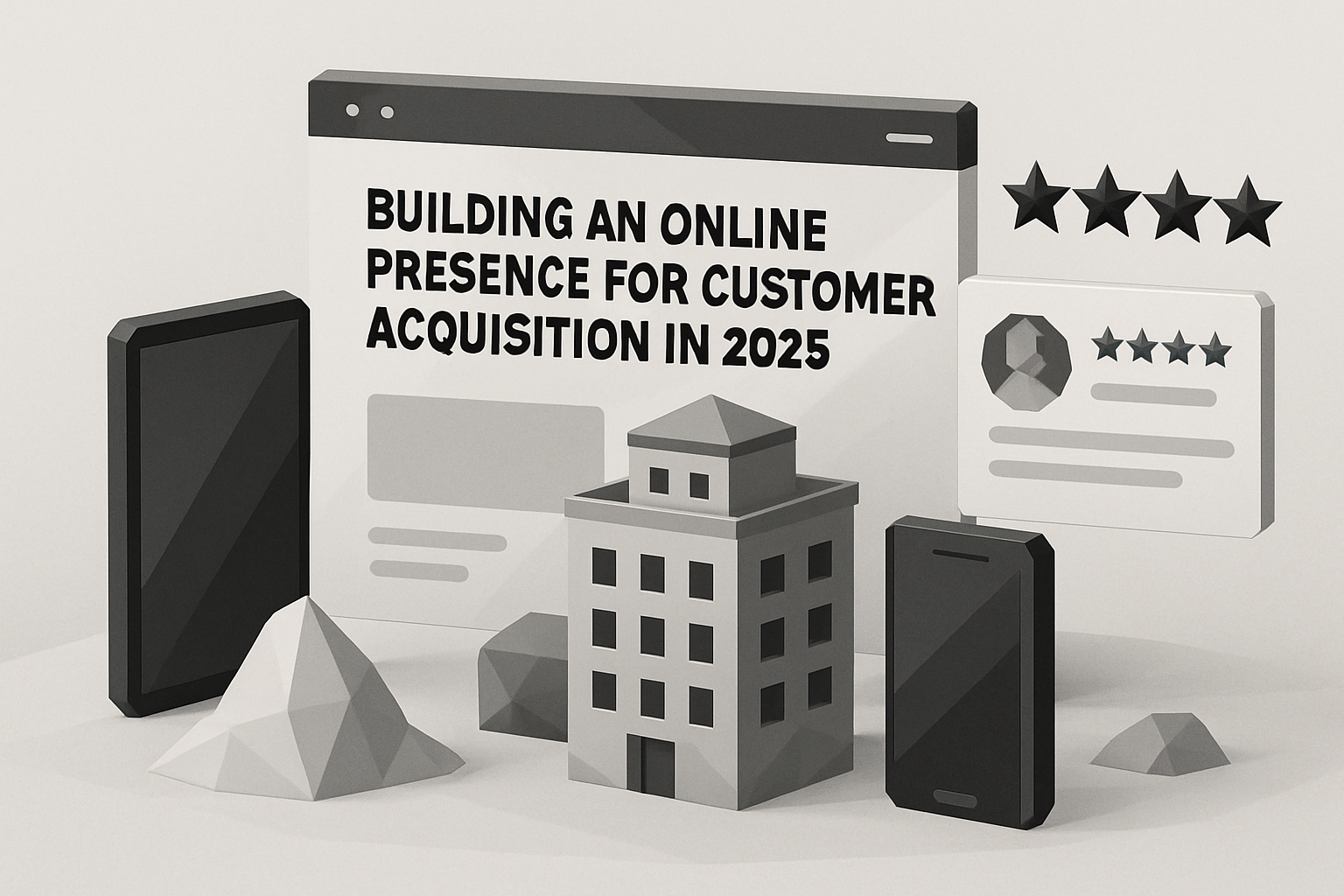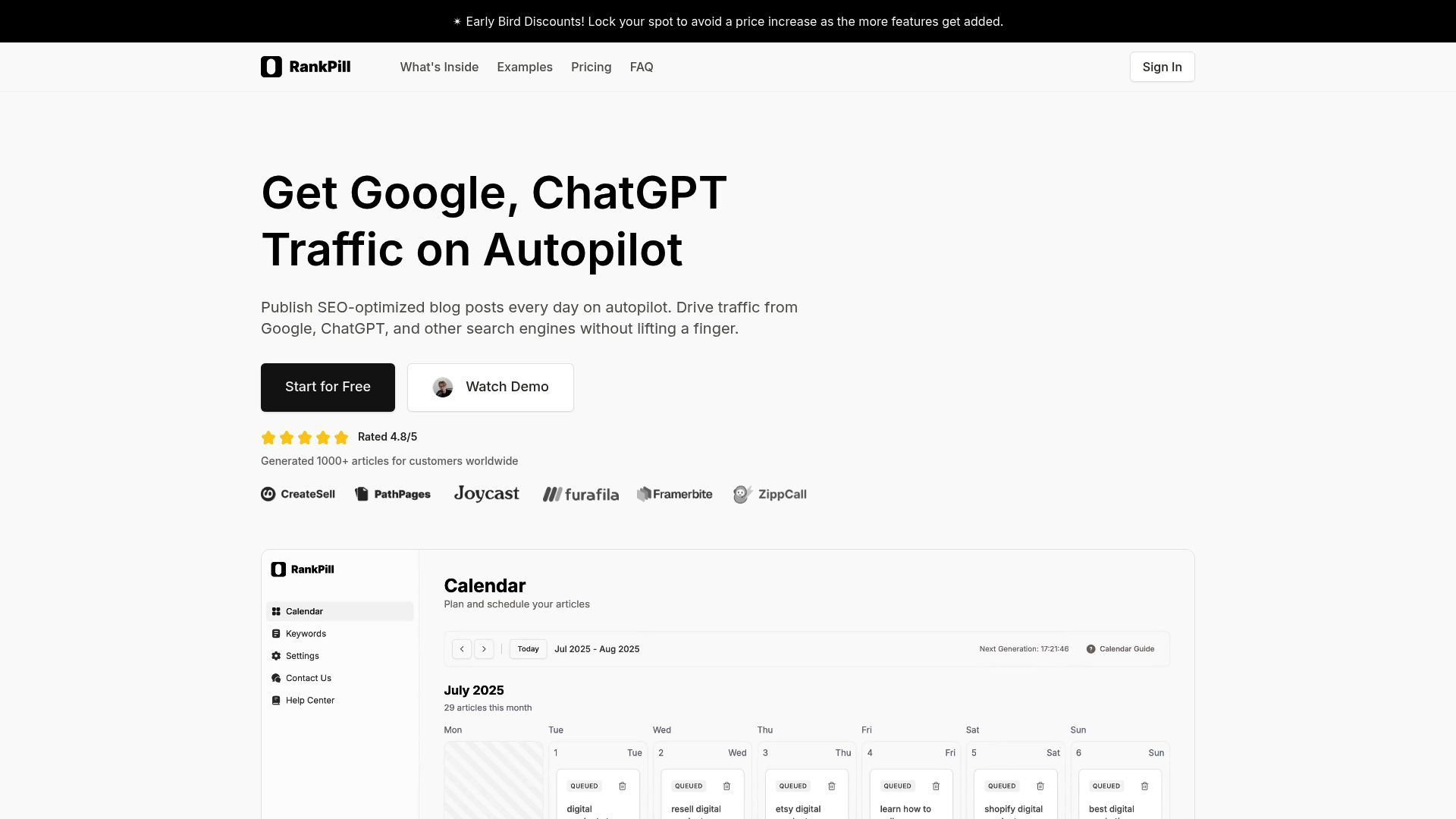Struggling to figure out how to get customers online in 2025? You’re definitely not alone. As competition heats up, standing out and attracting new business can feel overwhelming.
But here’s the good news: the digital landscape is filled with fresh opportunities for businesses of all sizes. This guide will walk you through proven, up-to-date strategies so you can consistently win new customers online, no matter your industry.
You’ll learn how to define your ideal audience, optimize your online presence, create value-packed content, harness social media and paid ads, and use the latest automation tools. Ready to build a customer acquisition engine that thrives? Let’s get started.
Step 1: Define Your Target Audience and Unique Value Proposition
At the heart of any strategy on how to get customers online lies a clear understanding of who your customers are and what makes your business stand out. Before you launch campaigns or write content, you need to know exactly who you’re targeting and why they should choose you. Let’s break down the first and most critical step in building a strong digital customer acquisition engine.

Understanding Your Ideal Customer Profile
Building an accurate customer profile is the foundation of how to get customers online. Start by creating detailed personas that include demographics, interests, pain points, and buying motivations. Use analytics tools, customer surveys, and social listening to uncover real data about your audience.
For example, a DTC skincare brand leveraged Instagram Insights to discover that their most engaged followers were women aged 25-34 interested in cruelty-free products. With this knowledge, they refined their messaging and offers to better fit their true audience.
According to Customer Acquisition Statistics 2025, 82% of marketers who use personas see improved value propositions and higher conversion rates. The most common mistake? Targeting too broadly or making assumptions about what customers want. Data-driven personas help you avoid wasted effort and speak directly to those most likely to buy.
- Include: age, location, interests, challenges, goals
- Use: Google Analytics, social media insights, survey tools
- Avoid: vague or generic personas
Crafting a Compelling Value Proposition
Once you know your audience, the next step in how to get customers online is to clarify what makes you different. Your value proposition should instantly communicate the problem you solve, how you solve it, and the outcome customers can expect.
A proven framework for this is Problem-Solution-Outcome messaging. For example, a SaaS startup struggled with conversions until they reworded their homepage to focus on the unique benefits their software delivered, resulting in a measurable lift in signups.
Align your messaging with your customer’s needs and the terms they’re searching for online. Use language that mirrors their pain points and aspirations. This not only differentiates you in a crowded market but also improves your relevance in search results.
| Step | Description |
|---|---|
| Problem | What customer pain do you address? |
| Solution | How does your product or service help? |
| Outcome | What results or transformation can they expect? |
Mapping Customer Journeys
Understanding the customer journey is essential for mastering how to get customers online. Visualize every step a prospect takes, from discovering your brand to making a purchase. Map out key touchpoints—such as social ads, website visits, and checkout—and identify where friction may exist.
For instance, an e-commerce business noticed most drop-offs happened on their shipping information page. By streamlining that step, they increased completed purchases significantly.
Mapping the journey allows you to deliver the right message at the right time. Use funnel diagrams or simple flowcharts to see where users might get stuck. Optimize each stage so prospects move smoothly from awareness to consideration and finally to conversion.
Every successful customer acquisition strategy begins with a laser-focused audience, a clear value proposition, and a mapped-out journey. These steps set the stage for all other tactics as you learn how to get customers online.
Step 2: Build and Optimize Your Online Presence
Building a strong online presence is the foundation of how to get customers online. In 2025, your digital storefront is often the first—and sometimes only—impression you make. A seamless, trustworthy, and optimized presence helps you stand out, attract the right audience, and convert visitors into loyal customers.

Website Essentials for Customer Acquisition
Your website is the engine of how to get customers online. It must be mobile-first, load quickly, and offer an intuitive experience. Nearly 88% of consumers say they won’t return after a poor website experience, so every detail matters.
Key website essentials:
| Feature | Why It Matters | 2025 Best Practice |
|---|---|---|
| Mobile-First Design | Most customers browse on phones | Responsive, thumb-friendly menus |
| Speed Optimization | Slow sites lose visitors fast | Load time under 2 seconds |
| User-Friendly UX | Friction kills conversions | Clear navigation, simple forms |
| SEO Fundamentals | Drives organic traffic | On-page, technical, keyword-rich |
One local bakery doubled its leads after a website overhaul focused on speed and mobile usability. For more on how small businesses can optimize for search, check out SEO for small businesses.
Leveraging Local SEO and Online Listings
If you want to know how to get customers online in your area, local SEO is a game changer. Start by claiming and perfecting your Google Business Profile. Add up-to-date info, business hours, and compelling photos.
Encourage happy customers to leave reviews and respond to them—good or bad. Reputation builds trust and influences buying decisions. For example, a home services company saw bookings soar after actively managing their Google Maps presence and collecting positive feedback.
Establishing Trust with Social Proof
Trust is non-negotiable for how to get customers online. Social proof—like testimonials, case studies, and user-generated content—can tip the scales in your favor. Did you know 93% of users read reviews before buying?
Showcase real customer experiences on your site and across your listings. Feature before-and-after photos, star ratings, and authentic quotes. This reassurance can make the difference between a visitor and a sale.
Conversion Rate Optimization (CRO) Best Practices
Even with traffic, the real win is turning visitors into customers. CRO is the art and science of improving that process. Use clear calls to action (CTAs), irresistible lead magnets (like free downloads), and a frictionless checkout flow.
Top CRO tactics:
- Use contrasting, action-oriented CTAs
- A/B test landing pages and forms
- Minimize fields in sign-up and checkout
- Offer value upfront (free trial, sample)
A SaaS company boosted signups by 35% after A/B testing their landing page headlines and simplifying their forms.
Essential Automation Tools for Online Presence
Finally, automation tools are essential for how to get customers online at scale. Use website analytics (like Google Analytics) to track what’s working. AI-powered chatbots can answer questions instantly, increasing response rates and capturing leads 24/7.
Real-world example: An e-commerce store implemented a chatbot to guide shoppers and saw a significant uptick in conversions and customer satisfaction. Automation frees up your team to focus on growth, not grunt work.
Step 3: Attract Customers with High-Value Content Marketing
Standing out online in 2025 means going beyond generic posts and stale blogs. If you want to master how to get customers online, you need a high-value content strategy that attracts, educates, and converts. Let’s break down exactly how to build a content engine that delivers real results.
Content Strategy Fundamentals
A documented content plan is your roadmap for how to get customers online. Surprisingly, only 41% of marketers have a written strategy, yet those who do see higher success rates (CMI, 2024).
Start by mapping your buyer’s journey—what questions do prospects have at each stage? Create content that addresses those needs:
- Blog posts for awareness
- Videos or webinars for consideration
- In-depth guides or case studies for decision
Here’s a quick comparison:
| Stage | Content Type | Goal |
|---|---|---|
| Awareness | Blog, Social | Attract new visitors |
| Consideration | Webinar, Video | Nurture interest |
| Decision | Guide, Case | Drive conversions |
To truly nail how to get customers online, ensure every piece of content ties back to your business goals and audience pain points.
SEO Content Creation and Distribution
Creating SEO-focused content is a cornerstone of how to get customers online. Start with keyword research targeting acquisition intent. Use tools like Google Keyword Planner or Ahrefs to find phrases your audience is searching for.
Optimize every page for on-page SEO:
- Use target keywords in titles, headings, and meta descriptions
- Add internal links to related articles
- Ensure readability with short sentences and clear formatting
Distribution matters, too. Share your content on social platforms, email newsletters, and industry forums. For a deep dive, check out Content creation for SEO success to strengthen your approach.
Leveraging AI and Automation in Content Creation
AI is transforming how to get customers online by making content creation faster and more scalable. With AI tools, you can:
- Generate blog ideas based on trending topics
- Write product descriptions in seconds
- Analyze which content drives the most engagement
For example, an e-commerce store using AI publishes daily product guides, keeping their website fresh and their audience engaged. This automation frees up your team to focus on strategy and creativity.
How RankPill Can Automate SEO Content Creation
If you’re serious about how to get customers online, automation platforms like RankPill can be game changers. RankPill delivers:

- Personalized keyword research tailored to your niche
- Daily, SEO-optimized articles ready to publish
- Built-in SEO scoring to maximize organic reach
Small businesses, startups, and marketers use RankPill to save time and reduce costs while consistently attracting organic traffic. Companies leveraging RankPill report faster growth, thanks to automated blog publishing and streamlined SEO tasks.
Content Promotion and Amplification
Creating great content is only half the battle in how to get customers online. You need to amplify your reach. Promote content through:
- Email campaigns to your subscriber list
- Social media sharing and paid boosts
- Partnerships with influencers or industry communities
A recent viral campaign saw a brand multiply its website traffic by leveraging a mix of email and social channels—proof that smart promotion can supercharge your acquisition efforts.
Measuring and Optimizing Content Performance
To master how to get customers online, you must track what’s working. Key metrics include:
- Website traffic and session duration
- Number of leads generated
- Engagement rates (shares, comments)
- Conversion rates from content
Use tools like Google Analytics, HubSpot, or SEMrush to monitor performance. Regularly review your data and run A/B tests to optimize future content. Continuous improvement ensures your content marketing stays sharp and effective.
Step 4: Harness Social Media and Community Engagement
Social media and online communities are now essential for any business learning how to get customers online. In 2025, simply having accounts isn’t enough—you need a strategic, audience-focused approach that turns social interaction into real growth. Let’s break down exactly how to get customers online through the most effective channels and engagement tactics.

Choosing the Right Platforms for Your Audience
Not every social media platform will help you achieve how to get customers online. The key is to match your brand with where your ideal audience spends their time. B2B businesses often find LinkedIn and X (Twitter) most effective, while B2C brands usually thrive on Instagram, TikTok, or Facebook.
Consider these 2025 platform trends:
- TikTok’s rise for Gen Z and Millennial shopping
- LinkedIn’s continued dominance in B2B networking
- Instagram’s evolution with shoppable posts
Research platform demographics, test content, and monitor results. For example, a B2B SaaS firm might prioritize LinkedIn, while a DTC fashion brand could focus on TikTok for viral reach.
Building Authority and Trust Through Consistent Posting
To master how to get customers online, post high-quality content consistently. A content calendar helps you plan ahead, maintain frequency, and build trust with your followers. Use scheduling tools like Buffer or Hootsuite to automate posts and analyze engagement.
A small business, for instance, saw its followers grow fivefold in six months by sharing behind-the-scenes videos and educational tips every week. Focus on value, not just promotion—audiences reward brands they can rely on for insights and authenticity.
Social Selling and Direct Engagement Techniques
Direct engagement is a game-changer for how to get customers online. Respond quickly to comments, direct messages, and reviews to show you care about customer needs. Host live Q&As, webinars, or product demos to foster real-time interaction.
Try these tactics:
- Personalized replies to comments and DMs
- Thanking customers publicly for sharing experiences
- Using polls or stories to spark conversation
These approaches humanize your brand and move prospects down the funnel.
Leveraging Influencer Partnerships
Influencer marketing is a powerful way to amplify how to get customers online. In 2025, micro-influencers (with 10k–100k followers) often deliver higher ROI than celebrities, thanks to their engaged, niche audiences.
For example, a DTC skincare brand doubled sales by partnering with 20 micro-influencers who shared honest reviews. Choose influencers whose values align with your own and collaborate on authentic campaigns that resonate with your target market.
Community Building and User-Generated Content
Building branded communities—such as Facebook groups, Discord servers, or hashtag challenges—creates a sense of belonging and loyalty. User-generated content (UGC) showcases real customers, making your brand more relatable and trustworthy.
Did you know 70% of consumers trust peer recommendations over traditional ads? Encourage fans to share their experiences, run contests, or feature customer content on your profiles. For more tips on generating leads organically, check out Generating leads with free traffic.
Paid Social Strategies for Customer Acquisition
Paid campaigns are critical for scaling how to get customers online. Use retargeting to reach website visitors who didn’t convert, and create lookalike audiences to find new potential buyers.
Test different creatives, copy, and calls-to-action. For instance, a local business boosted bookings by 40% through Facebook Ads targeting people within a 10-mile radius. Always track performance and optimize based on data for the best ROI.
Step 5: Accelerate Growth with Paid Advertising and Partnerships
Reaching your next wave of online customers requires more than organic tactics alone. Paid advertising and strategic partnerships are the turbo boosters for how to get customers online, helping you scale results fast in 2025. Let’s break down the channels, campaigns, and collaborations that move the needle.
Digital Advertising Channels: Search, Social, Display
Choosing the right channels is foundational for how to get customers online. In 2025, the most popular digital ad platforms remain:
- Search Ads: Google Ads, Bing Ads
- Social Ads: Facebook, Instagram, LinkedIn, TikTok
- Display: Programmatic networks, YouTube, banner networks
Here’s a quick comparison:
| Channel | Strengths | Best For |
|---|---|---|
| Search | High intent, scalable | Lead generation |
| Social | Targeting, engagement | Brand awareness, B2C |
| Display | Retargeting, reach | E-commerce, awareness |
According to Google, businesses earn $2 for every $1 spent on Google Ads. As privacy and costs evolve, it’s smart to review future-proofing customer acquisition strategies to stay ahead.
Creating High-Converting Ad Campaigns
The heart of how to get customers online with paid ads is campaign quality. Focus on:
- Compelling ad copy that speaks to your audience’s needs
- High-impact visuals or videos
- Alignment between ads and landing pages
A SaaS business, for example, reduced cost per acquisition by 30% by refining their messaging and improving creative elements. Always test different headlines, offers, and images to find what resonates. Use clear calls to action and ensure every click leads to a seamless user experience.
Retargeting and Remarketing Strategies
Not all visitors convert the first time they see your offer. Retargeting is essential for how to get customers online. By segmenting audiences—like recent site visitors or cart abandoners—you can deliver personalized ads that nudge them back.
For e-commerce, retargeting campaigns can recover up to 15% of abandoned carts. Use dynamic product ads, tailored offers, and frequency caps to maximize results without overwhelming your audience. Remarketing works across search, social, and display platforms.
Strategic Partnerships and Affiliate Marketing
Partnerships are a powerful shortcut for how to get customers online. Collaborate with:
- Complementary brands (cross-promotions)
- Influencers (sponsored content)
- Affiliate marketers (performance-based)
Subscription box companies have scaled rapidly by launching affiliate programs and co-branded campaigns. Choose partners who share your values and audience. Establish clear terms, track referrals, and nurture relationships for long-term growth.
Budgeting, Tracking, and Optimizing Paid Campaigns
Success in how to get customers online depends on smart budgeting and relentless optimization. Set clear KPIs—like cost per acquisition, return on ad spend, and conversion rate. Use tools such as Google Analytics, ad dashboards, and attribution models to track performance.
Regularly A/B test creatives, adjust bids, and reallocate budget based on what works. Optimization is ongoing: even small tweaks can yield major improvements. The goal is to maximize every dollar and fuel sustainable, scalable customer acquisition.
Step 6: Nurture and Convert Leads into Loyal Customers
Turning prospects into loyal customers is the heart of how to get customers online. It doesn’t stop at capturing a lead—you need to nurture each contact, build trust, and encourage repeat business. Let’s break down the proven steps to move leads smoothly through your funnel and create lasting relationships.
Lead Capture and Email Marketing Fundamentals
The first step in how to get customers online is capturing qualified leads. Effective lead magnets—like ebooks, free trials, discounts, or webinars—can entice visitors to share their contact info. But before you can nurture, you must attract the right audience.
If you’re struggling to fill your funnel, start with proven increase website traffic strategies to drive more visitors to your site. Once those leads arrive, use clear signup forms and GDPR-compliant opt-ins. Remember, quality beats quantity—focus on attracting people who are genuinely interested in your offer.
Automated Email Sequences and Personalization
Automation is a game changer for how to get customers online efficiently. Set up welcome emails, nurture series, and re-engagement campaigns that deliver the right message at the right time. Use personalization to address subscribers by name and reference their interests or actions.
Personalized emails can drive up to six times higher transaction rates. Segment your audience based on behaviors or preferences, and let automation handle follow-ups. This approach keeps your brand top-of-mind without manual effort.
Building Trust Through Education and Value
Trust is non-negotiable in how to get customers online. Share valuable resources—such as case studies, how-to guides, or customer success stories—to educate leads and demonstrate your expertise. By offering genuine value, you’ll help prospects see you as a trusted advisor instead of just another vendor.
Consider a drip sequence that answers common questions or addresses pain points. This builds confidence and moves leads closer to making a purchase.
Loyalty Programs and Customer Retention Tactics
Acquiring a customer is only half the journey in how to get customers online. To maximize lifetime value, implement loyalty programs with rewards, referral incentives, or exclusive VIP experiences. Offer points for purchases, early access to new products, or discounts for referrals.
For example, e-commerce brands often see a 25% lift in repeat purchases after launching a rewards program. Make it easy for customers to join and redeem benefits to keep them coming back.
Gathering Feedback and Continuous Improvement
Continuous feedback is essential for refining how to get customers online. Use surveys, Net Promoter Score (NPS), and customer interviews to understand what’s working and where you can improve. Don’t just collect data—act on it.
Implement changes based on customer insights. Even small tweaks, like updating onboarding materials or adjusting your loyalty program, can have a big impact on satisfaction and retention.
Step 7: Analyze, Iterate, and Scale Your Online Customer Acquisition
Ready to turn your efforts into a repeatable growth machine? The final step in mastering how to get customers online is all about analyzing your results, making smart improvements, and scaling what works. By tracking the right numbers and staying flexible, your business can keep outperforming the competition.
Tracking Key Metrics and Analytics
To succeed with how to get customers online, you need to know which efforts are paying off. Focus on essential metrics like customer acquisition cost (CAC), customer lifetime value (CLV), conversion rates, and top traffic sources. Use platforms such as Google Analytics, CRM dashboards, and heatmaps to visualize user behavior and spot trends.
Quick KPI Table:
| Metric | Purpose | Tool Example |
|---|---|---|
| CAC | Cost to acquire a customer | Google Analytics |
| CLV | Revenue per customer | CRM Dashboard |
| Conversion Rate | % of visitors taking action | Heatmap Tool |
Review your metrics regularly to stay on top of what's working.
Running Experiments and A/B Testing
Experimentation is at the heart of how to get customers online. A/B testing lets you compare different landing pages, ad creatives, and offers to see which drives more conversions. Start with small changes, like button colors or headlines, and scale up to bigger tests as you learn.
- Test one variable at a time.
- Set clear goals for each experiment.
- Use statistical significance to validate results.
This approach helps you maximize results with less guesswork.
Scaling Successful Tactics Across Channels
Once you’ve found what moves the needle, double down. Repurpose your highest-performing content or campaigns across channels—think blog posts turned into videos, or social ads adapted for email. For example, a service business might expand from local to national reach by amplifying proven strategies.
Scaling your how to get customers online process means systematizing what works and using automation tools to support growth.
Staying Ahead: Adapting to Trends and Technology
The digital landscape changes fast. To keep your how to get customers online strategy effective, monitor industry updates, algorithm changes, and new platforms. According to the Content Marketing Trends 2025, 63% of businesses will boost their digital marketing budgets, signaling more competition and innovation.
Stay agile by reviewing trends, testing new tools, and learning from both wins and setbacks. This mindset will help your business thrive year after year.
Now that you’ve got a clear roadmap to attract more customers online—from defining your ideal audience to automating content and nurturing lasting relationships—the next step is putting these strategies into action. If you want to save time and get results faster, why not let AI do the heavy lifting for you? With RankPill, you can automate your SEO content creation, target the right keywords, and keep your publishing on track—all with one easy platform. Ready to grow your business and boost your organic traffic? Get Started today and make customer acquisition effortless in 2025.